The Mezcal Invasion

By B. Alexandra Szerlip
Contributor
24/1/2020

Four, three, even two years ago, mezcal was considered tequila’s seedy, under-the-radar cousin, a bootleg brew that, for a long while, the Mexican government couldn’t be bothered to tax.
Now, seemingly overnight, mezcal is everywhere.
It’s made from agave, a cactus-like succulent that is, to Mexico’s maestro mezcaleros, what grapes are to France’s top vintners, an essential part of their national patrimony. Both plants embody terroir — a nearly ineffable combination of soil, topography, and climate of the place where they grow. But unlike wine grapes, which can be “cultivated,” some agave thrive only in the wild. Of those, some are rare, some even in danger of extinction. And unlike grape vines, which bear fruit on a regular basis, each agave plant is, as the song goes, “a one-time thing.”
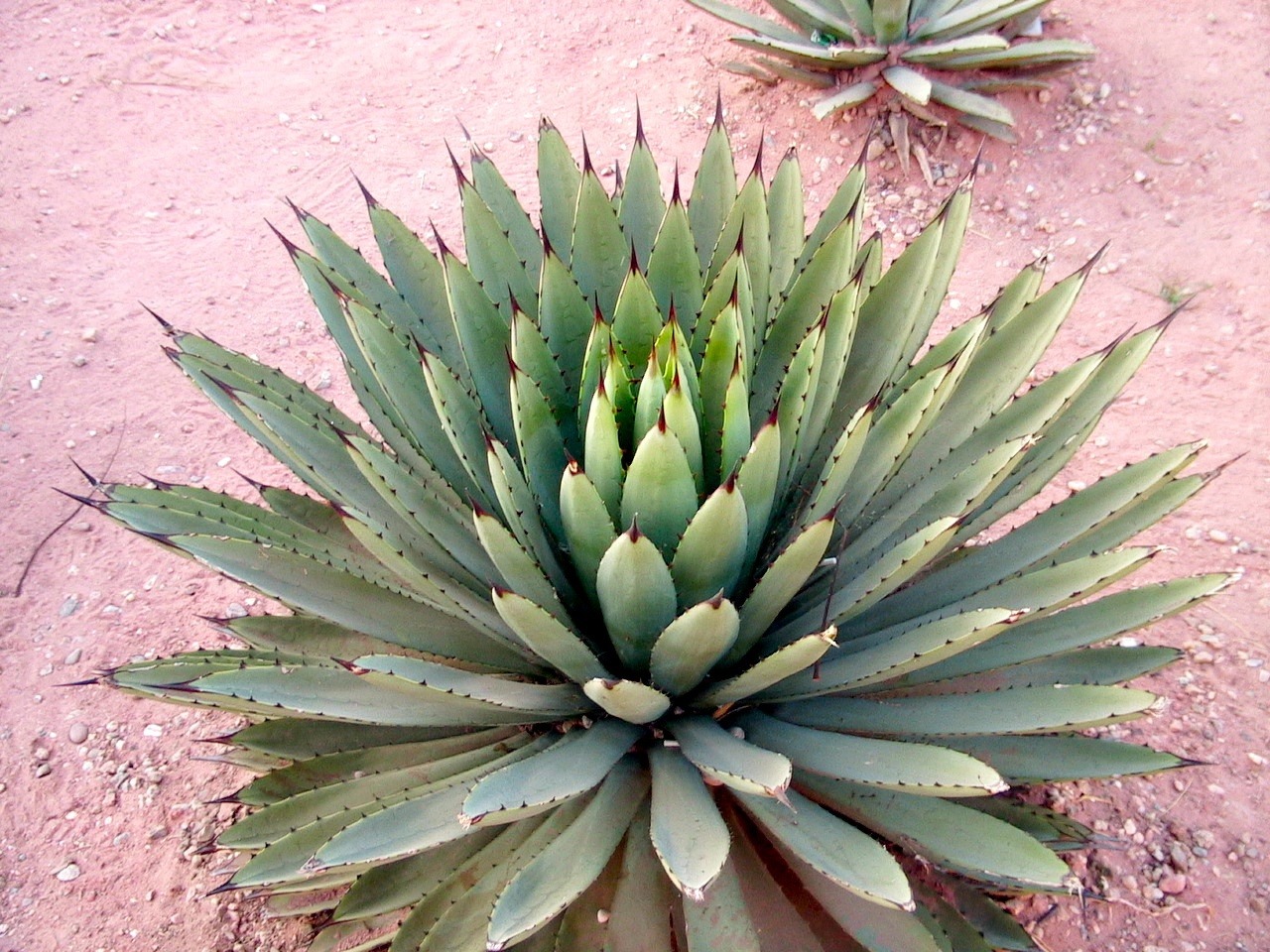
Agave (Picture Credit: Darij & Ana)
Agaves take anywhere from eight to 30 years to mature, depending on the species. At some point in their development, they send up a flowering stalk, called a quiote, which can grow as high as twenty feet. While some agave flowers are allowed to be pollinated (by moths, bats, and hummingbirds) and “go to seed,” the vast majority of quiotes are cut off so that the sugars required to grow them remain concentrated in the plant’s body.
When it’s time to harvest — knowing how, and exactly when, can be difficult, as different agaves mature at different rates — the entire, now-sugar-dense body is stripped, by hand, of its fleshy, spiky leaves using a coa, a long wooden handle with a sharp, circular cutting blade at the bottom. What remains is called a pina, because it resembles an immense pineapple (the body can weigh from 80 to 200 pounds). Despite its size, a mature pina translates, in the end, to 10 distilled bottles or less.
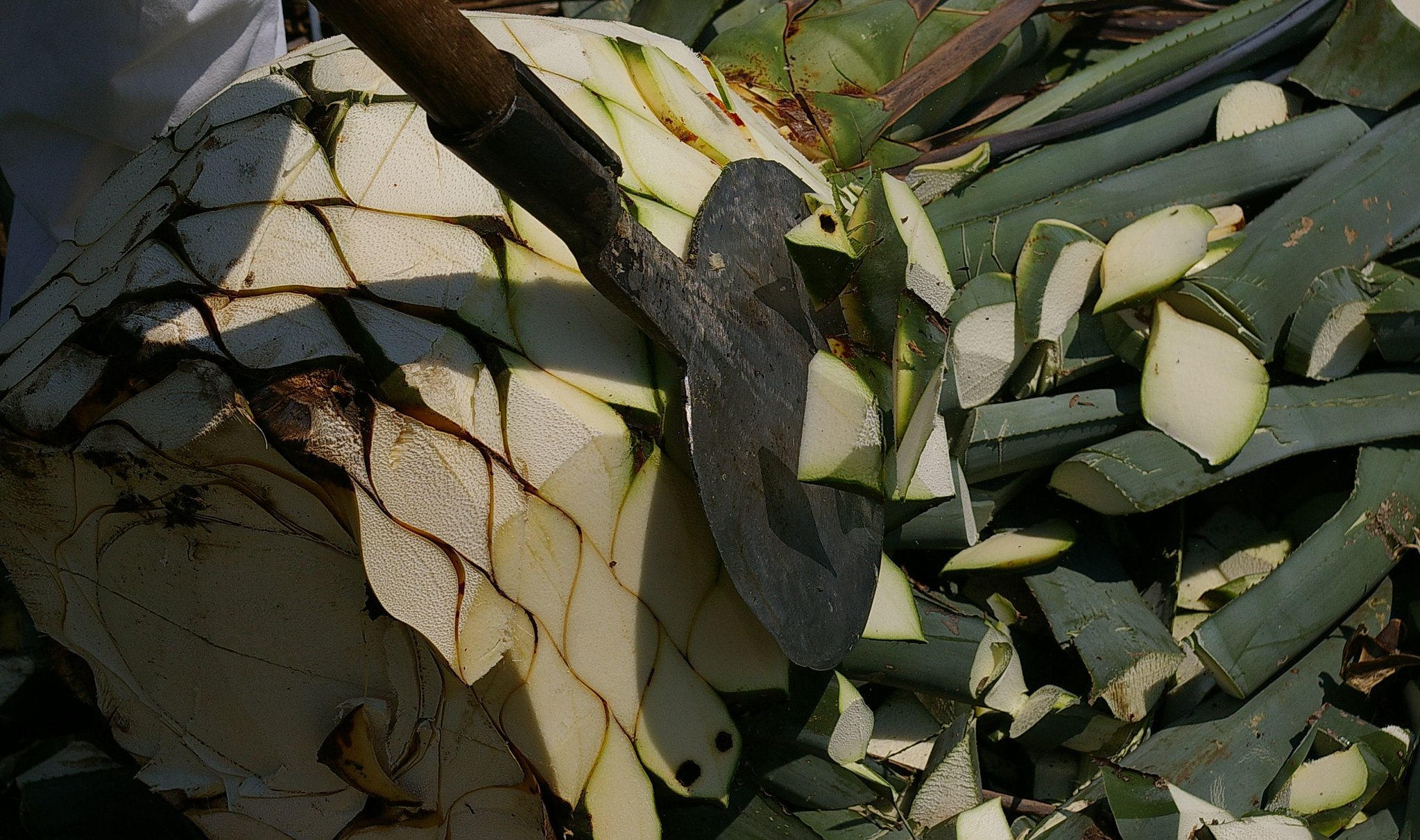
Leaves being separated from the pina with a coa (Picture Credit: Thomassin Mickaël)
Agave is the source of both tequila and mezcal. But mezcal enthusiasts compare the former, in its industrialized, factory-made, never-touched-by-human-hands perfection (automated metal shredders, autoclaves, and enormous, fast-cooking diffusers) to McDonald’s and Coca Cola. The differences begin with the fact that tequila is made from only one type of plant — Agave Tequilana Weber or Blue Agave.
Mezcal enthusiasts compare tequila to McDonald’s and Coca Cola.
Mezcal, by contrast, is made from any of 35 to 40 different species. (More than half the agave species in the world are endemic to Mexico. The state of Oaxaca, where 85 to 90% of the world’s mezcal is produced, is home to 11 of them.) Each has a subtly distinctive taste. The flower-like tobalá (15 years to mature) translates into a smooth, fruity spirit; Tepeztate agave (25 years) yields a strong, earthy one. Others can be sweet, floral, dry, or even spicy.
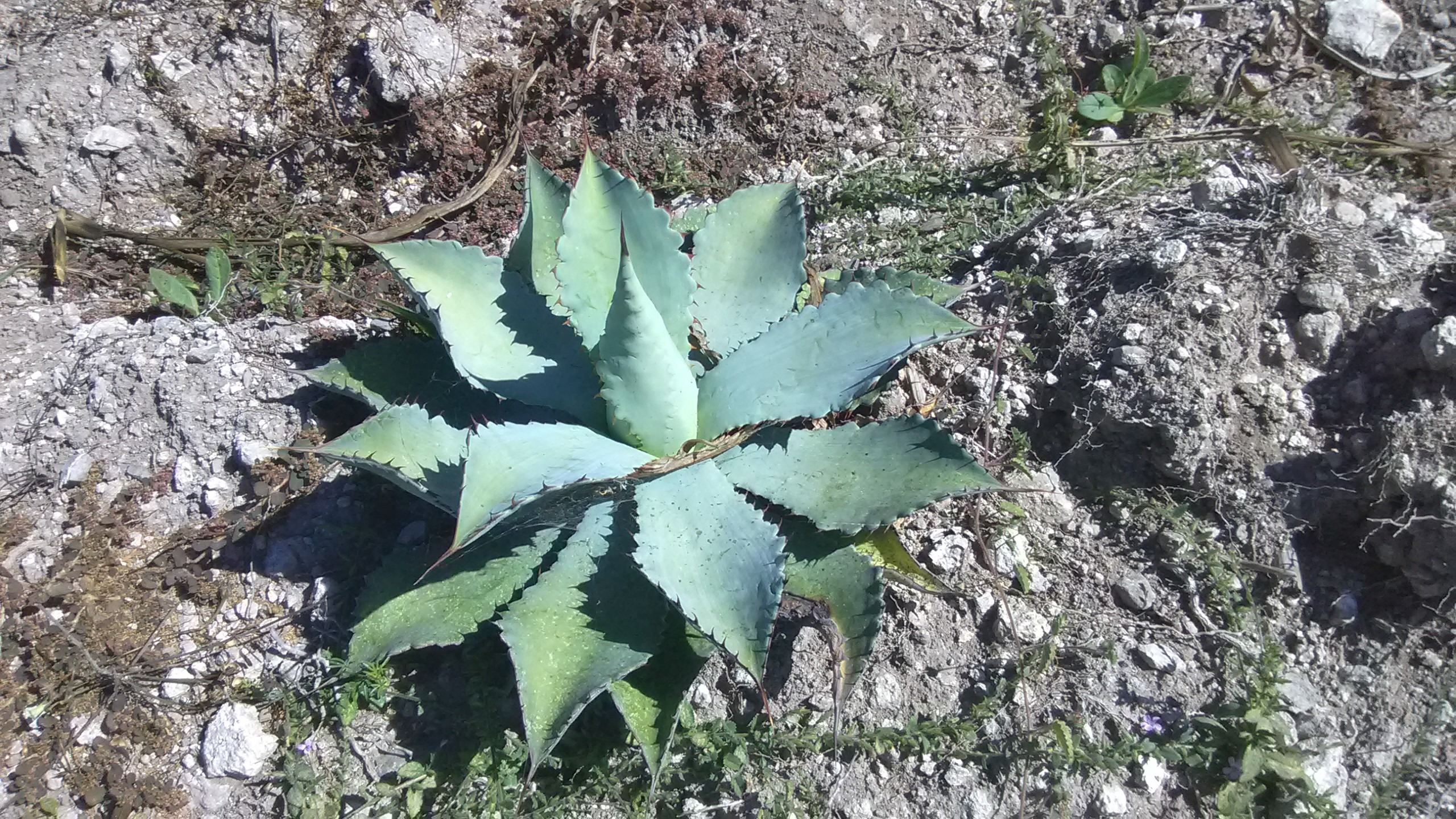
Tobala agave
Production remains artisanal — as hands-on and labor-intensive as it was when the Conquistadors introduced the Aztecs to distillation in the early 1500s. Each palenque (artisanal distillery) has its own unwritten “recipes” — determined by the maestro mescalero — that inform everything from smokey-ness and alcohol content to aging.
And while tequila pinas are steamed to soften them up for crushing, pinas destined for mezcal are roasted, out of doors, for three to seven days, in a six-ton, conical earthen pit lined with heated river stones. (Mezcal comes from the Aztec word meaning “cooked agave.”)
The roasted pinas, which fill the air with the smell of smoky molasses, are removed from the pit and placed in an outdoor ring, where they’re chopped, by hand, into smaller chunks, then crushed with a large, volcanic stone wheel harnessed to a burro, horse, or sometimes an ox or two. The resulting mash is then transferred to wooden barrels for fermentation, which takes anywhere from two to eight days. The only additives are spring water and native, airborne yeasts unique to each palenque. Distillation takes place either in copper or clay pots over wood-burning ovens.
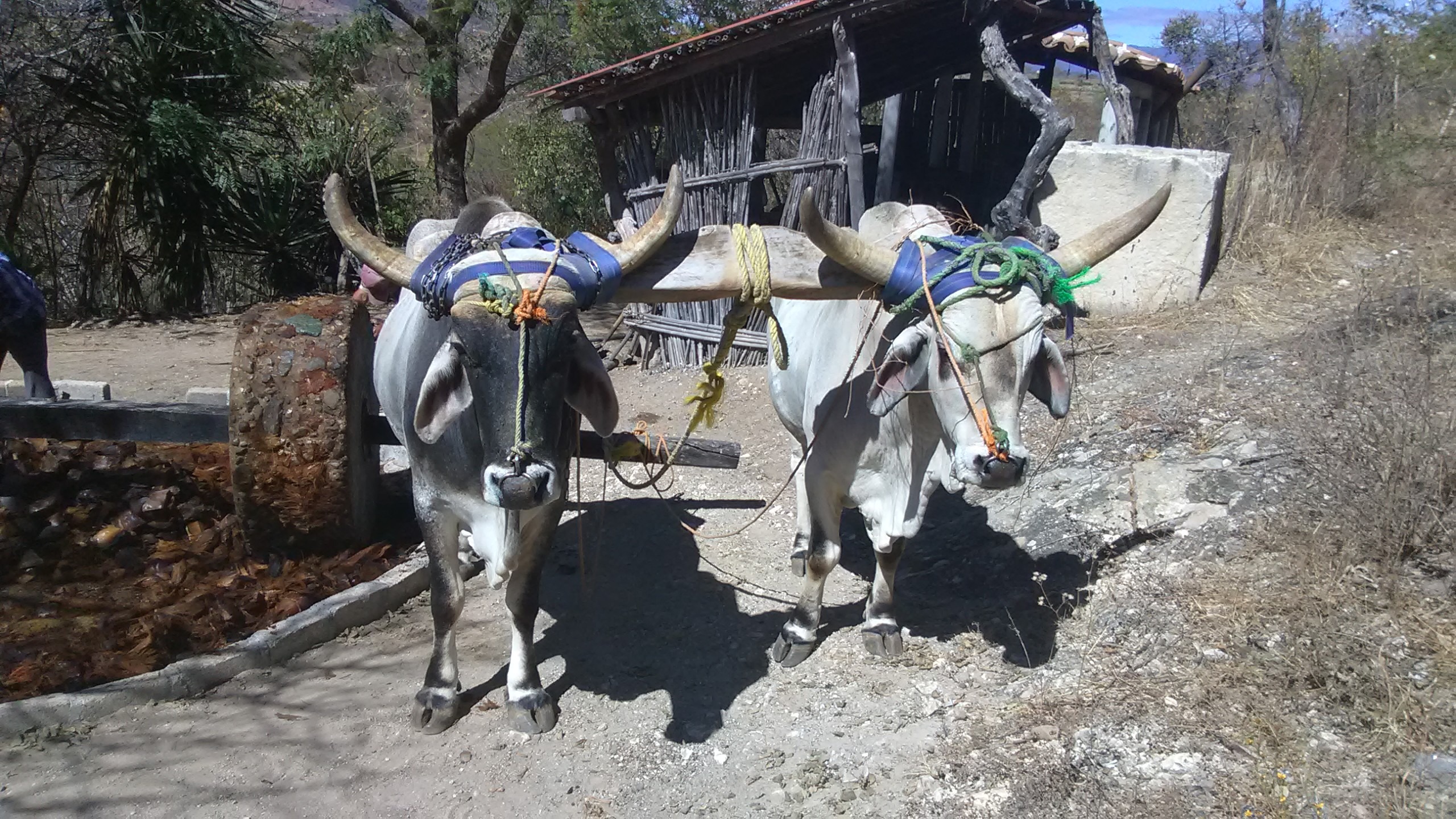
Oxen pulling a grinding stone
And yet, despite all the attention to detail, the oldest distillate in the Americas retains, for many (including some Mexican nationals) a reputation as rotgut, moonshine, a poor man’s substitute for whiskey or brandy — a reputation helped along, over the years, by everything from movies featuring borracho Mexican bandits, tequila-swilling college students on Spring Break, the Rolling Stones’ infamous 1972 Cocaine and Tequila Sunrise Tour and, on a somewhat higher scale, by Under the Volcano, Malcolm Cowley’s mezcal-saturated 1947 novel about the horrors of alcoholism (“How, unless you drink as I do, could you hope to understand the beauty of an old Indian woman playing dominoes with a chicken?”).
***
Things began a slow turn in the early 1990s, when an American artist by the name of Ron Cooper began seeking out small, indigenous, Zapotec palenques in Oaxaca’s outback, eventually founding Del Maguey, the first mezcal label to enter the US market. “I struggled for 18 years,” he later recalled, “converting people one at a time,” changing the perception of mezcal from “diesel fuel with a worm in it to one of the most heritage beverages in the world.”
In 2011, when Manhattan’s Museum of Modern Art held an exhibit on Mexican painter and muralist Diego Rivera, it served artisanal Oaxacan mezcal cocktails to 2,000 opening night guests. Two years later, the New York Times attributed mezcal’s rising popularity to its “smoke and swagger.” Big-name liquor companies began taking notice. In 2017, Pernod Ricard acquired Del Maguey. In July 2018, the vodka brand Stoli announced its own super-premium Se Busca Mezcal. That same year, Casamigos, the tequila brand co-owned by actor George Clooney (with an estimated value of $1 billion), also debuted a mezcal. All of which has inspired bartenders to invent new cocktails with names like The Oaxacan Slushie, Smoky Mezcal Negroni, Kombucha Mezcal Mule, Watermelon-Basil Mezcal Margarita, and Blind Lemon Jefferson.
The New York Times attributed mezcal’s rising popularity to its “smoke and swagger.”
You can still find mezcal with a maguey worm drifting in the bottom of the bottle — a gimmick introduced in the 1940s to “prove” that the distillation had been made from 100% genuine agave. (In 1980s Manhattan, swallowing the supposedly hallucinogenic worm was, in some Yuppie circles, considered a rite of passage.) Another die-hard tradition is drinking mezcal with orange wedges dipped in sal de gusano — a mix of salt, chili, and dried, ground-up maguey worms. But “garnishing” a quality mezcal is, to some aficionados, akin to sacrilege.
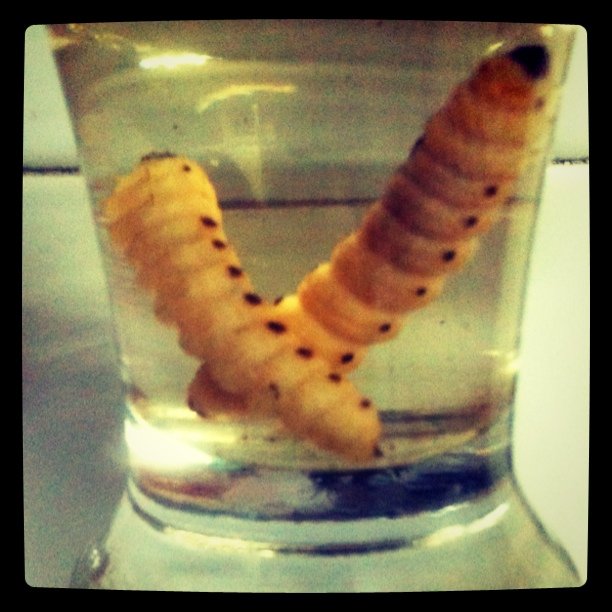
Maguey worms (Picture Credit: Roger Casas-Alatriste)
And as for “throwing back” shots, good mezcal is designed to be sipped and savored. If it wasn’t invented to cover up the taste of inferior mezcal, the gusano ritual may have served simply to slow drinkers down.
***
Mezcal falls into several basic categories: artisanal, ancestral, joven, reposado, anejo, and abocado (additives). Artisanal means distilled in copper; ancestral means distilled in clay pots (and, on occasion, fermented in cowhide). Joven (white or young) is the un-aged, clear distillate. Reposado has been “rested” anywhere from two months to less than a year in oak barrels (some of the wood comes from once-used whiskey barrels). Anejo has been aged anywhere from one to 10 years.
As for additives, mezcal has, in recent years, become a tabula rasa of creative experimentation. There are mezcals presented like eau-de-vie, with an entire apple inside the bottle. Some of the newer brands place distilled Jamaica flowers, or even a small mushroom, inside. A weaver in Teotitlan Del Valle, a town world-famous for its hand loomed, natural-dye rugs and tapestries, adds cochineal (a red dye made from tiny cactus insects indigenous to Mexico) to give the drink a rosy hue — an old Campari secret. It’s not unusual to find unlabelled, 10-gallon jugs displayed behind a mezcal bar, augmented by the owners with cinnamon sticks, yerba buena, pennyroyal, or eucalyptus. Some palenques even produce cremas, presumably for the tourist trade — opaque, pastel-colored, honey-sweetened concoctions in flavors like cappuccino, coconut, kiwi, passion fruit, pina colada, pistachio, and strawberry.
Then there are the more dignified pechugas, sometimes known as “harvest” mezcals. Traditionally, pechugas were only made for special occasions like weddings, baptisms, and funerals. Unlike “ordinary” mezcal, which undergoes two distillations, pechugas go through a third, during which a mesh sack containing anything from a skinned chicken or turkey breast (pechuga means “breast”) to venison, duck, or rabbit meat, as well as various seasonal fruits (guava, apple, pineapple, black plantains, mango, sour cherries) and/or nuts and herbs, is suspended inside the distillation tank. The steam vaporizes the proteins in the meat and fruit, which infuse the mezcal, creating subtle shades of flavor. One enterprising distiller, in collaboration with a local chef, has been experimenting with chicken breasts marinated in mole (a thick, spicy, addictive, and typically Oaxacan blend of walnuts, almonds, plantains, raisins, chocolate, garlic, sesame seeds, and various roasted chilis).
And, if you know the right mezcalero, he may introduce you to a home-brew infused with marijuana, or one for topical use only, used for healing bruises. Look for the scorpions at the bottom of the bottle.
Many palenques, whether government approved or not, hold themselves to very high standards. It’s the quality product resulting from those standards that catches the attention of corporations like Bacardi and Jose Cuervo (the world’s largest tequila brand), who approach them hoping to strike deals lucrative to both parties, in return for massive volume. Artisanal standards and massive output being mutually exclusive — a single mezcal distillation typically results in less than 500 bottles; the rarer the variety, the smaller and less frequent the yield — many palenques turn them down.
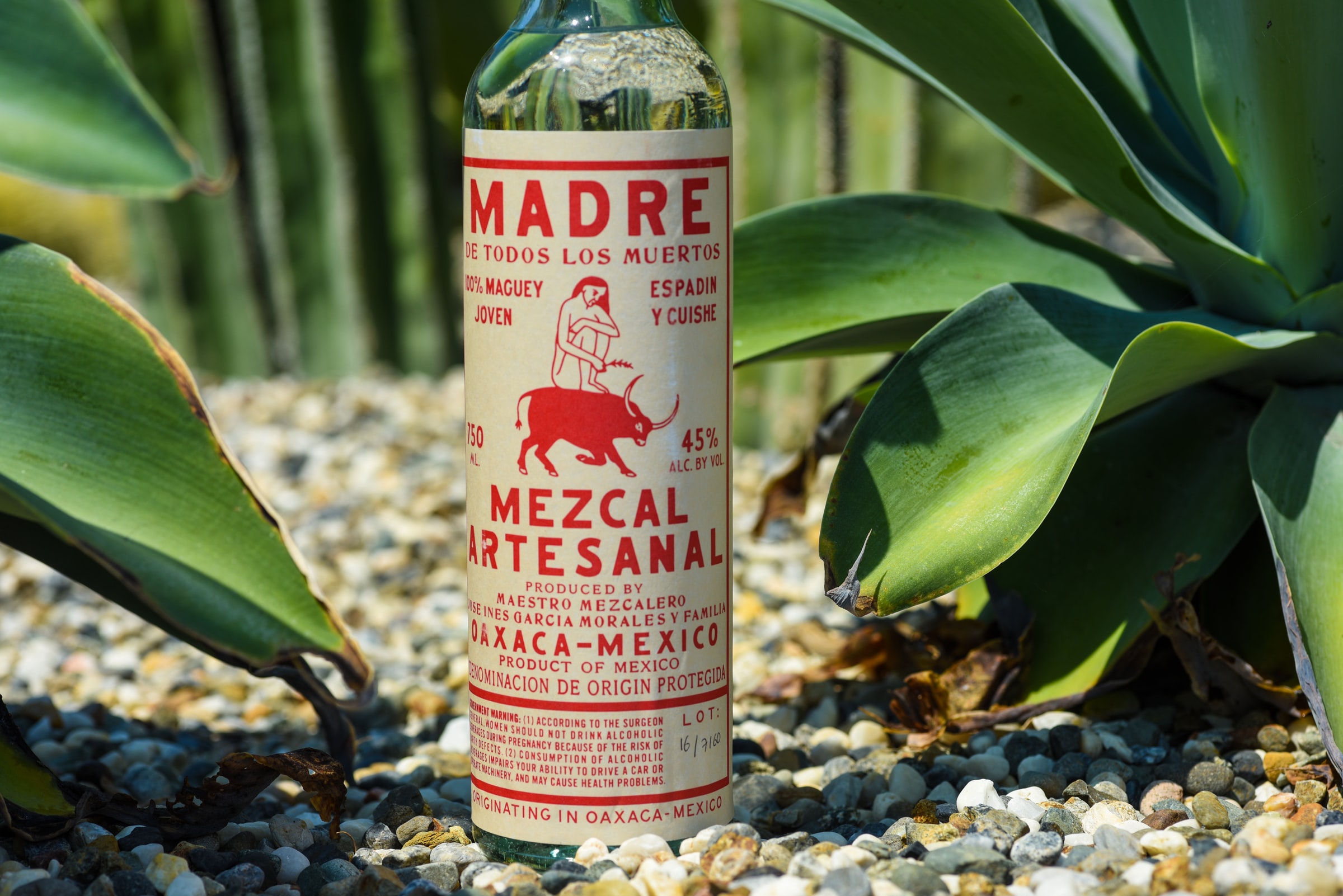
It’s estimated that mezcal production in Mexico today supports some 70,000 families. Many are peasant farmers whose predecessors have, for generations, been eking out a living selling homemade hooch to neighbors, friends, and by word of mouth.
Even those farmers who own land, an adobe or cinderblock house, and a pickup truck often get by without electricity or indoor plumbing. Given the recent increase in demand, sons, nephews, and cousins who left to earn money as fruit pickers in California or Florida, or as hotel workers in Mexico’s tourist meccas, are returning home, in growing numbers. After all, if you’re going to work hard, why not do it for something you believe in, and among people you know, instead of far away, for a stranger?
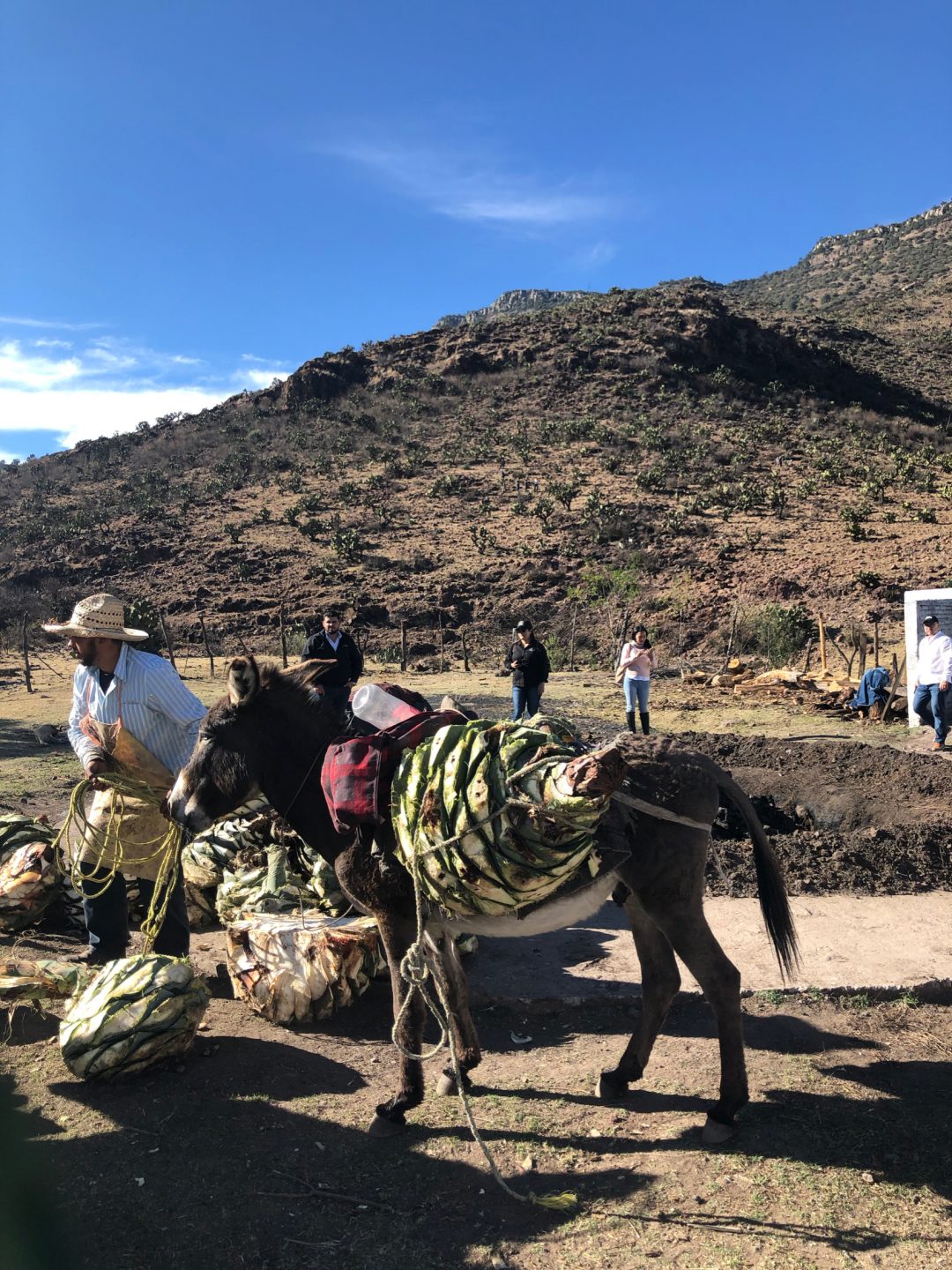
Transporting a pina via donkey
There are hundreds of such “off the radar” palenques scattered throughout the state of Oaxaca. Few customers have qualms about their lack of a government stamp; artisanal mezcal was, until recently, almost exclusively sold and consumed in the isolated, rural areas where it was made. Prior to 1994, even tequila lacked an official certification process.
“People who haven’t been here don’t understand,” notes renowned chef and cooking instructor Pilar Cabrera, who can’t sell unlabelled mezcal in her popular Oaxaca restaurant but keeps a generous stash of home brews at home for entertaining family and friends.
It’s hard to overstate the role of mezcal in Mexican culture. There are mezcal ballads (“When I die, I want two mezcal burros in my tomb”); mezcal aphorisms (“Tequila is to wake the living — mezcal is to wake the dead”); and inevitably, mezcal T-shirt slogans (“Drinking mezcal is an art, and we’re all artists”).
Today, the most passionate non-corporate promoters of mezcal are twenty- and thirty-something Norte Americanos who have followed Ron Cooper’s example and started import labels of their own. (A good place to check them out is at www.mexinabottle.com.) One of them is Yuan Ji, a statuesque, first-generation Chinese-American who jettisoned a promising career as an antitrust attorney to start the female-run, Brooklyn-based Erstwhile Mezcal. Erstwhile seeks out “kickass distillations,” some as small as 100 liters, made by small, independent family producers, who they help get certified and licensed for export to the US and beyond. Gem & Bolt, founded by the daughters of bohemian Virginia bootleggers, laces imported mezcal with damiana, a mint-like herb with alleged aphrodisiac properties.
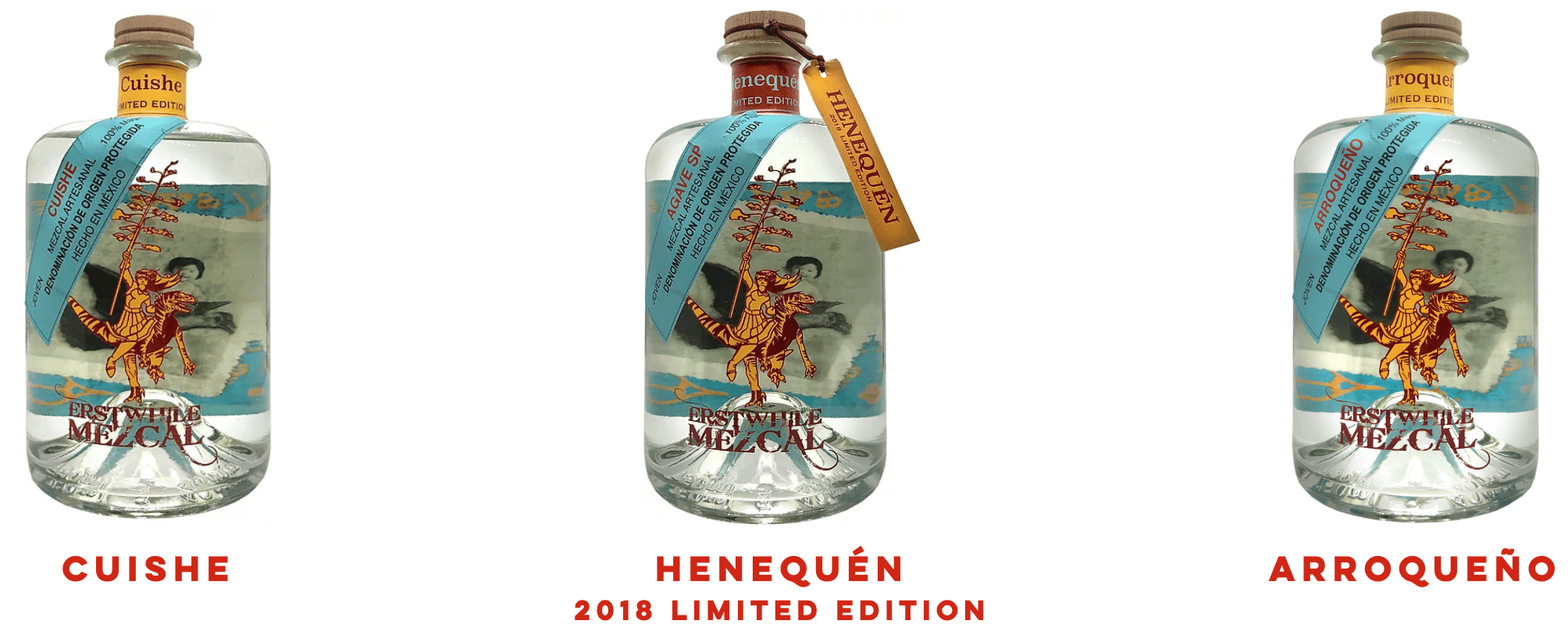
As mezcal continues to emerge on the world stage, women are slowly gaining more important roles in this traditionally male-dominated industry. A handful of master distillers who happen to be female, all from second, third, and fourth generation mezcalero families, some of whom never had the luxury of a formal education, have gained recognition. According to Graciela Angeles Carreno, who runs Real Minero, a company whose mezcal-making family tree dates back to the 1800s, the term maestra mescalera didn’t exist 10 years ago. “Before, you just made it. Now you’re labeled a master for simply doing what you’ve always done.” Others, like Canadian Mary Gagnier, widow of the renowned Zapotec weaver Arnulfo Mendoza Ruiz, have organized to “reforest” Oaxaca’s public lands with agave for the future.
Mezcal bars can now be found as far afield as Manhattan, London, Paris, Berlin, Tokyo, Singapore, and Hong Kong, a surge that corresponds to a growing backlash against an increasingly computerized, industrialized, franchised and homogenized world and a desire for “authentic” products imbued with provenance and tradition.
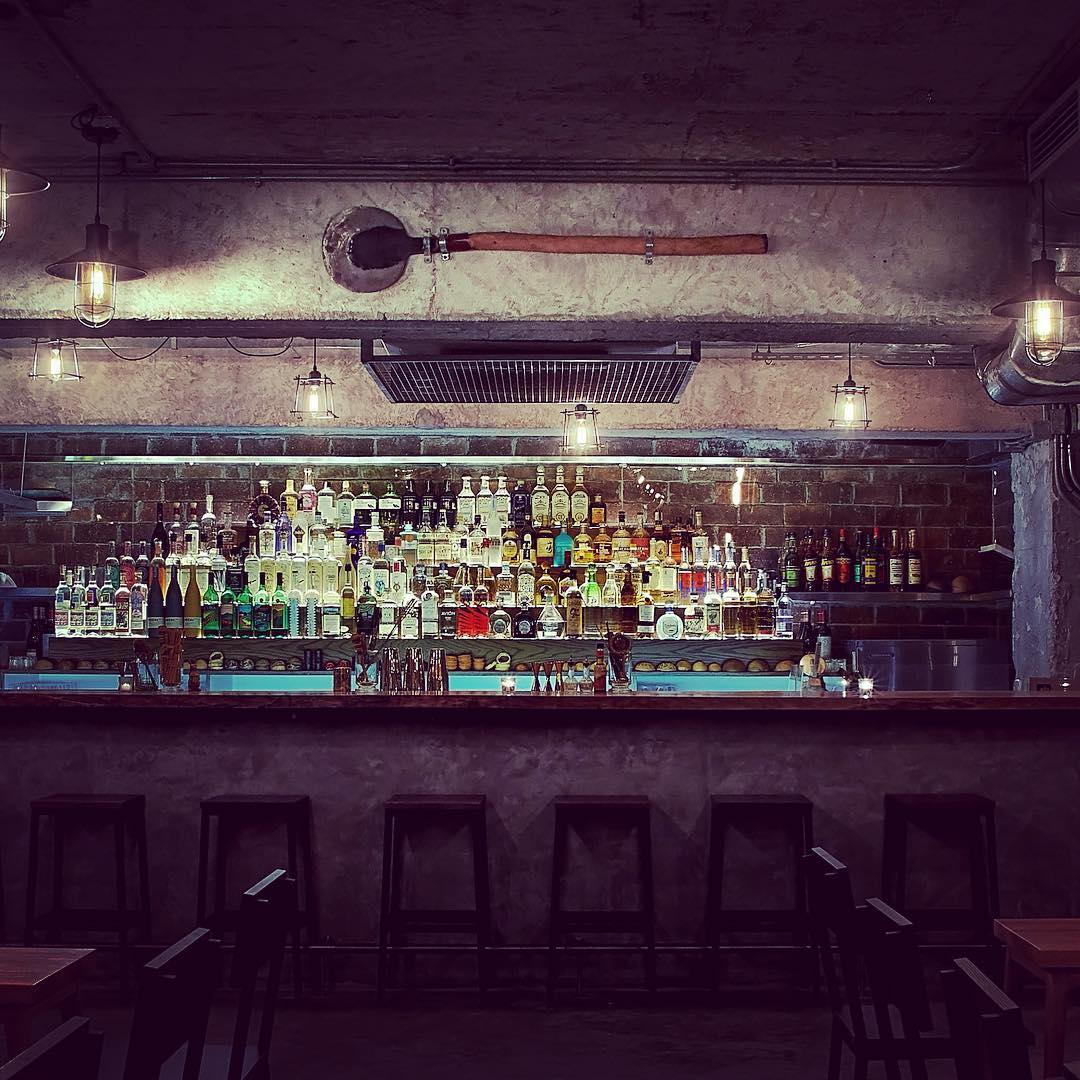
COA, a mezcal bar in Hong Kong (Picture Credit: COA)
***
The tequila market, meanwhile, shows no signs of slowing down; mezcal palenques, which have significantly fewer resources, are feeling the pressure. In 2018 alone, 18.5 million 9-liter cases of tequila were sold in the US. Large tequila companies, which buy agave contracts in bulk far in advance, are also buying up vast amounts of land, which has led to a burgeoning monoculture, with enormous fields, planted as far as the eye can see, with uniform rows of the handsome, spiky, relatively fast-growing blue Agave Tequilana Weber. To meet the global tequila demand, workers are quietly harvesting two-and three-year-old agaves; as their sugars haven’t developed enough yet, a disproportionally greater number are required to produce the same volume. Plus, monoculture crops are vulnerable to disease, which leads to the use of chemicals.
Blue agave “is like gold for the tequilarios,” explained Ana Jacinto Bianco, who works to promote the work of small mezcal farmers, through sustainability and viable marketing strategies, throughout Oaxaca. “Most of the big name-brand companies don’t care about sustainability.”
“For now, there’s enough agave for all,” she added, “but in the future…”
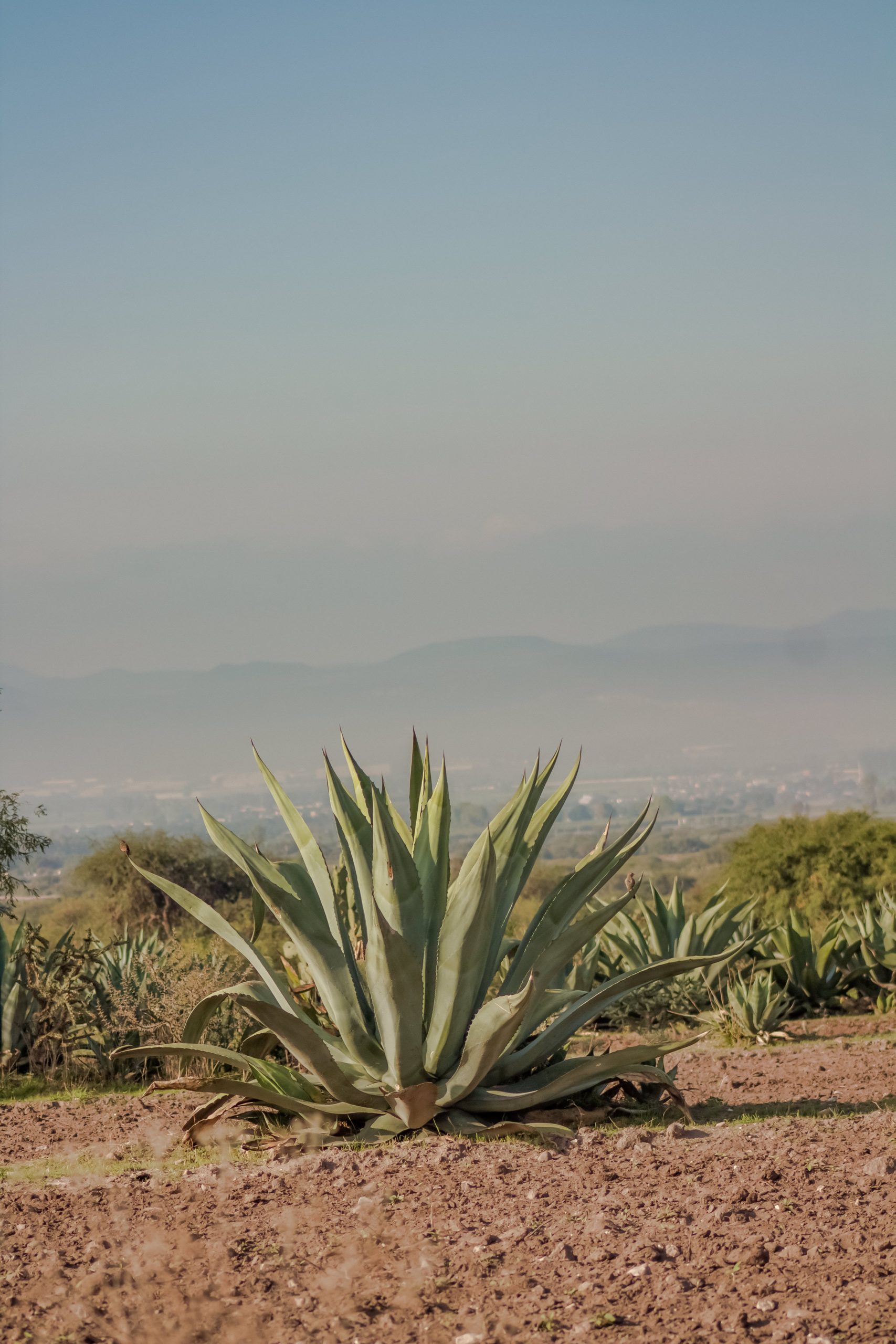
There’s a sense, among older mescaleros, that the more modernized things get, the more they’re losing their culture. And too much mezcal demand could decimate the slowest growing wild varieties that are found farther and farther afield. Meanwhile, plant theft is on the rise, and Mexico’s cartels are circling the corral like wolves.
Oaxaca’s farmers and artisanal distilleries are cultivating more seedlings than ever — from those species that lend themselves to cultivation. But given an eight-to-30-year gestation, they can’t make the agave grow any faster.
